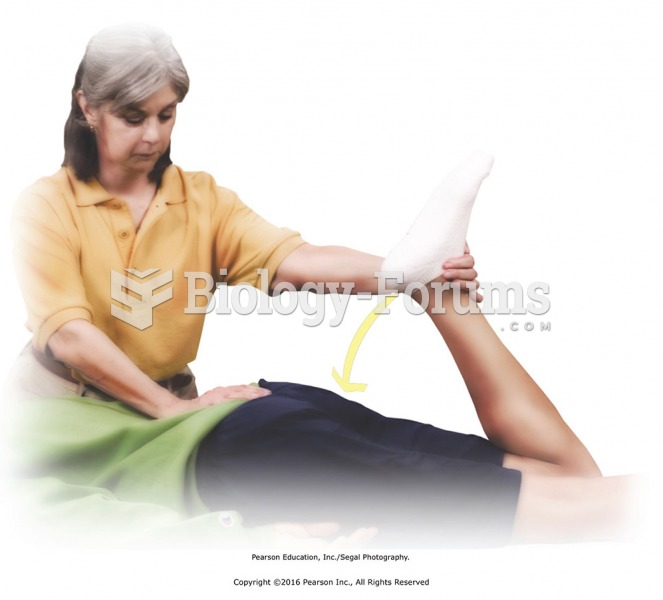|
|
|
Malaria was not eliminated in the United States until 1951. The term eliminated means that no new cases arise in a country for 3 years.
The cure for trichomoniasis is easy as long as the patient does not drink alcoholic beverages for 24 hours. Just a single dose of medication is needed to rid the body of the disease. However, without proper precautions, an individual may contract the disease repeatedly. In fact, most people develop trichomoniasis again within three months of their last treatment.
Eating carrots will improve your eyesight. Carrots are high in vitamin A (retinol), which is essential for good vision. It can also be found in milk, cheese, egg yolks, and liver.
Bacteria have flourished on the earth for over three billion years. They were the first life forms on the planet.
The oldest recorded age was 122. Madame Jeanne Calment was born in France in 1875 and died in 1997. She was a vegetarian and loved olive oil, port wine, and chocolate.
 Stretch quadriceps muscles by bringing the heel of the foot to the buttocks. Hold the stretch for ...
Stretch quadriceps muscles by bringing the heel of the foot to the buttocks. Hold the stretch for ...
 Neck stretch. Rest the receiver’s head on the palm of your right hand, taking a firm hold on the ...
Neck stretch. Rest the receiver’s head on the palm of your right hand, taking a firm hold on the ...





